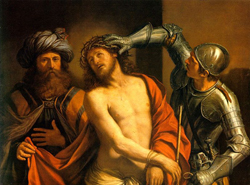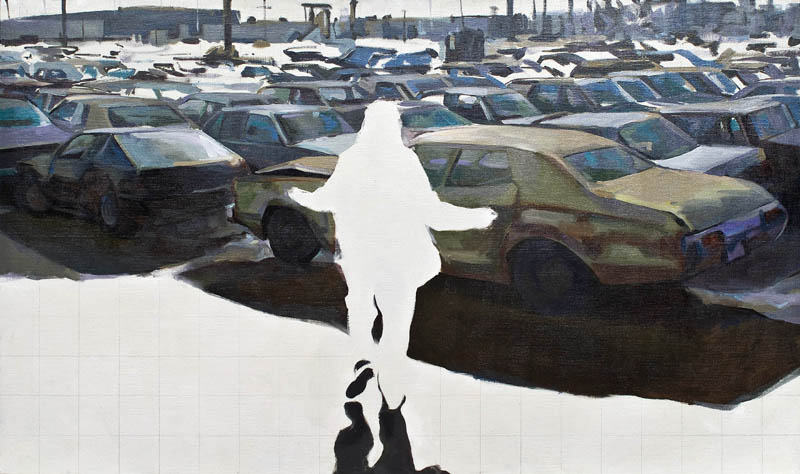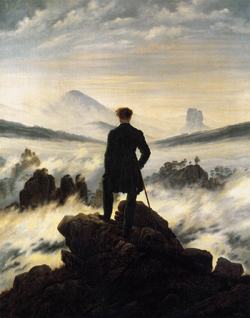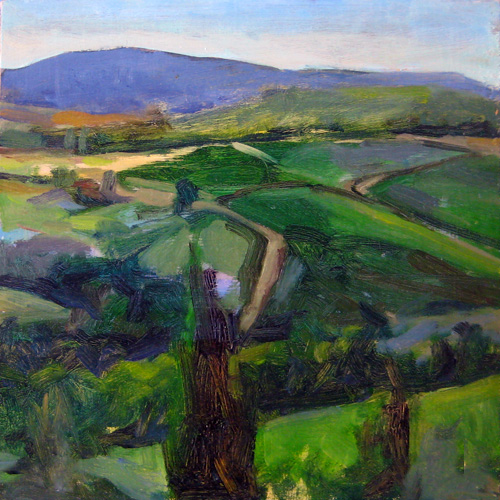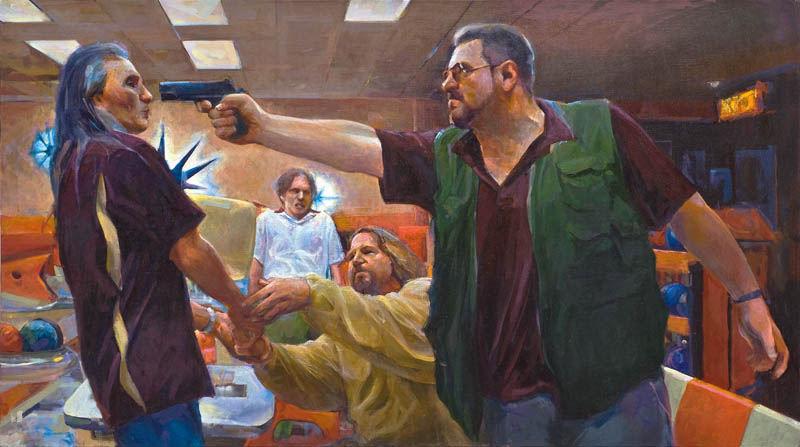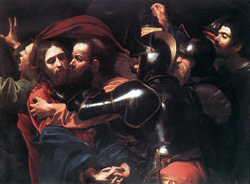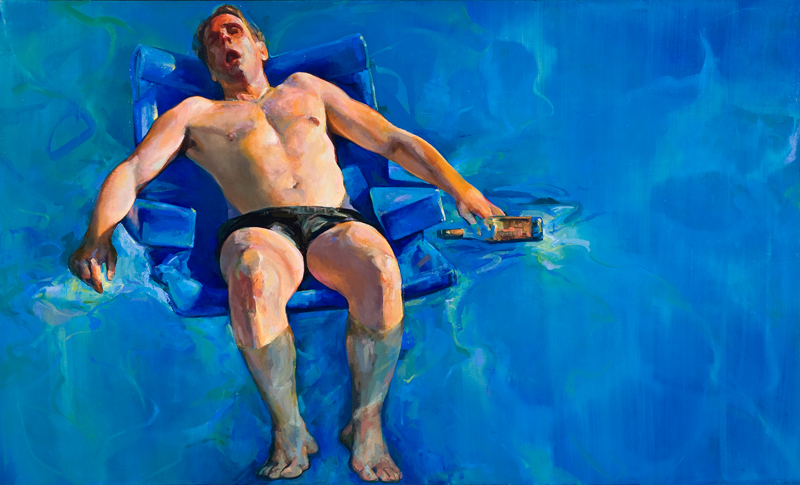
The Death of Marat (After David) • Joe Forkan 2008, oil on linen, 96″ x 58″
Begun in 2006, The Lebowski Cycle is a series of paintings exploring the idea of layered narratives, using masterpieces of western art and the 1998 Coen Brothers’ film The Big Lebowski as a starting point. Much of my previous work is figurative, dealing with memory and perception, and walks a line between representation and abstraction, but still I struggled with the idea of making narrative paintings. Film and television have largely overtaken painting as the mediums for narrative approaches, and contemporary painters have largely focused their attentions elsewhere.
Yet I have still found myself moved by paintings that depicted grand story arcs, compressing into a singular image a multitude of thoughts, ideas and emotions. And it wasn’t strictly the stories that interested me. Actually, when looking at narrative art from the Baroque era in particular, I am often more interested in the internal complexities of the images than the specifics of the story represented. The human interaction and conflicts, the formal qualities and modes of depiction give the paintings great breadth and depth and can continue to engage the viewer’s interest over time.
These were challenges I wanted to engage in my work. The formal and conceptual possibilities seemed enormous, but only if the narratives could remain mobile, and the paintings weren’t trapped in a singular reading.
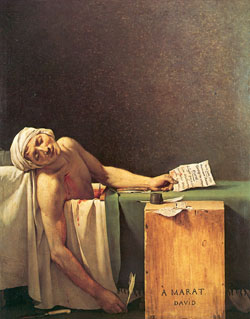
Death of Marat Jacques-Louis David 1793 Oil on canvas 64 in × 50 in Royal Museums of Fine Arts of Belgium, Brussels
I began thinking about The Big Lebowski, the 1998 film by Joel and Ethan Coen. In writing the film, the Coen brothers began by constructing of a labyrinthine narrative worthy of a Raymond Chandler novel, and replaced the traditional hardboiled detective character with an aging pothead, turning a genre on its head. This gave them great storytelling possibilities, playing off of and to the conventions of the genre (as well as the conventional take on aging potheads). I’ve always loved this film for its humor, its preposterous story arc, rich visuals, and the way the entire story is played so absolutely straight by the actors.
The film became a screen upon which I could project ideas from a wide range of sources and intensions. By combining narratives, themes, and titles from well-known works of western art with scenes from the film, and ideas and approaches from contemporary art, I found a rich repository of images that informed, overlapped and contradicted each other; ideas to alter, splice together, reconfigure, and run back through the language of painting.
It’s an engaging process. Each painting of the original twelve is at least 72 x 40 inches, painted with oil on linen. My desire was to have the paintings read as a body of work, and I knew that the paintings would diverge stylistically if painted sequentially, so I decided to begin all twelve of the original paintings at once. Four are now completed, the other eight are about 90-95% completed.


